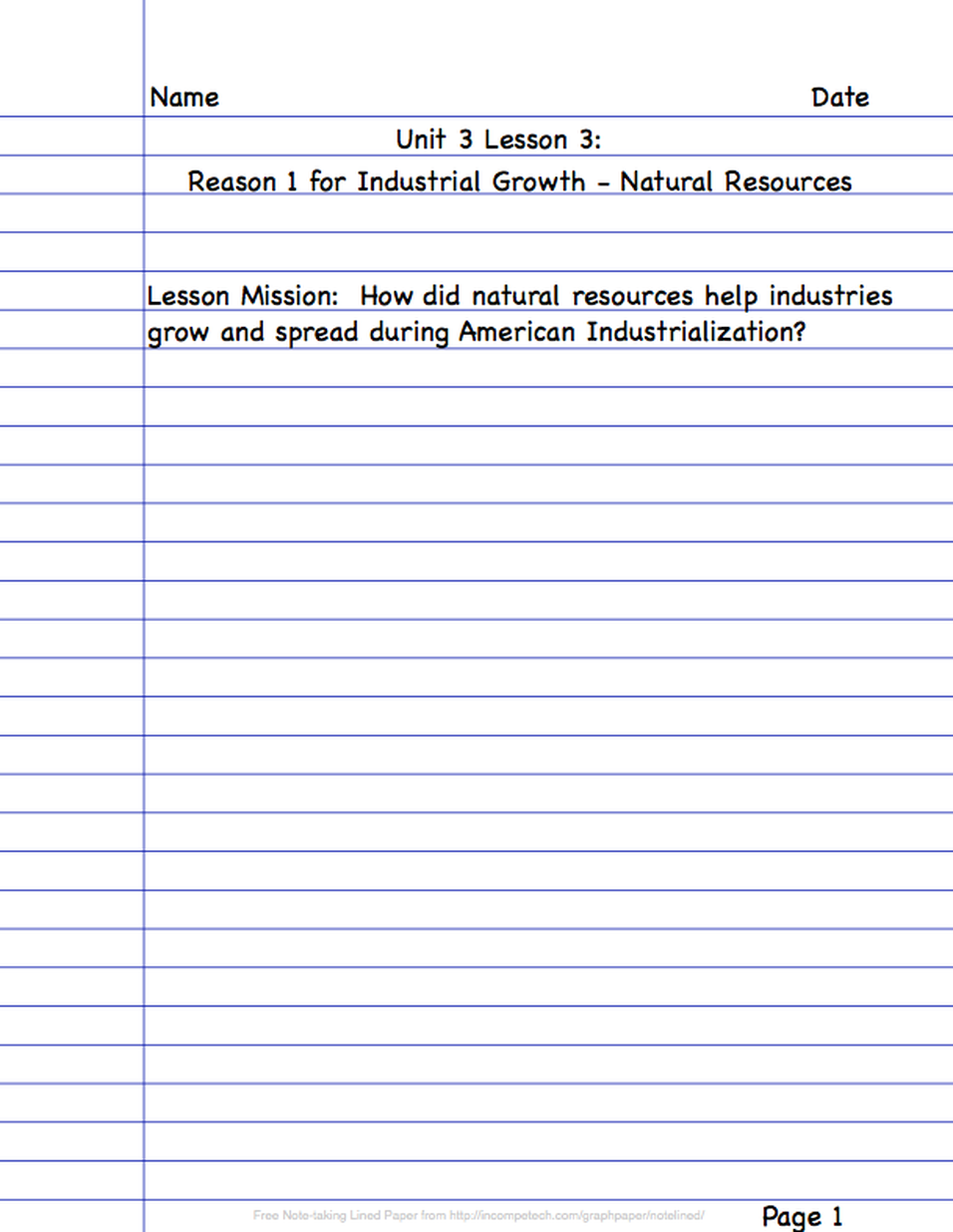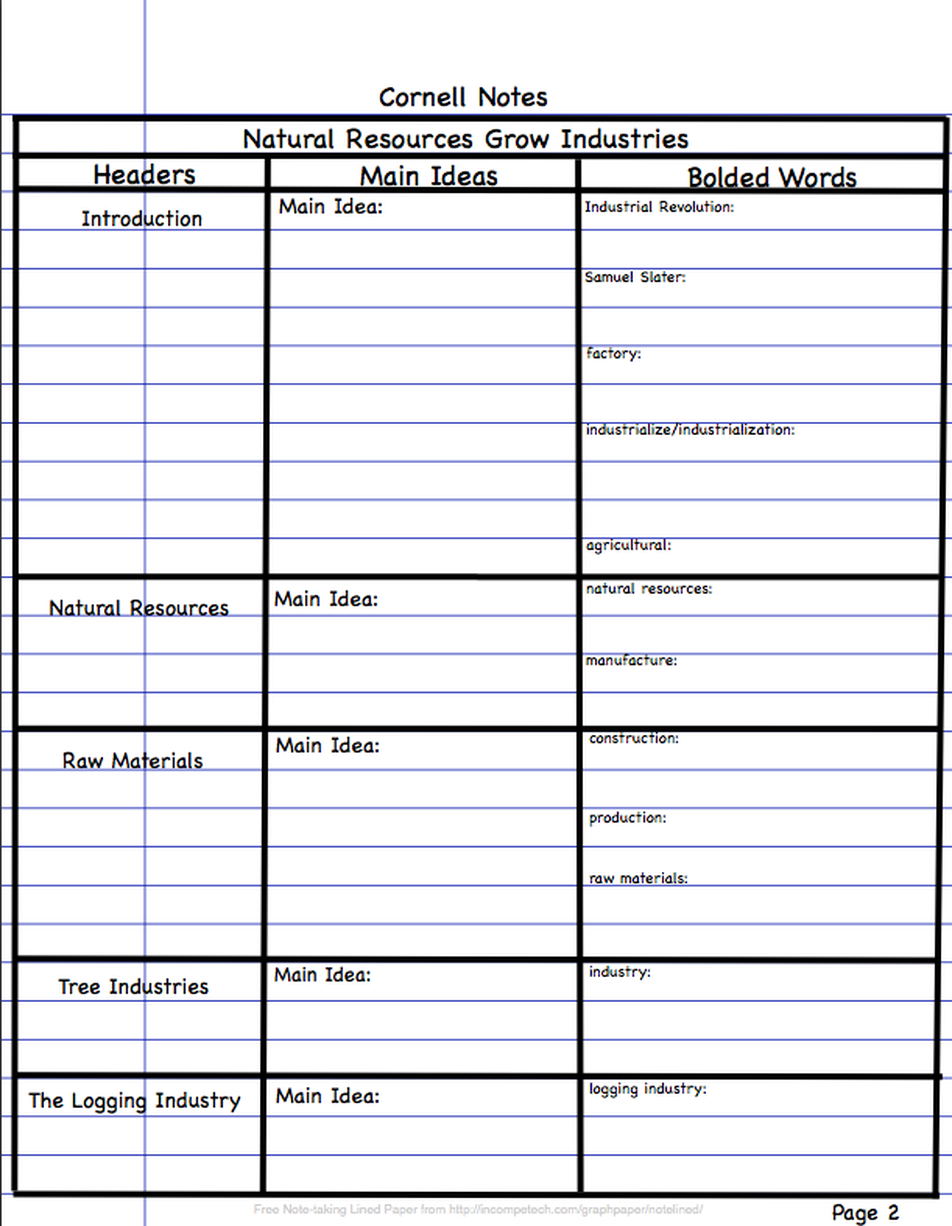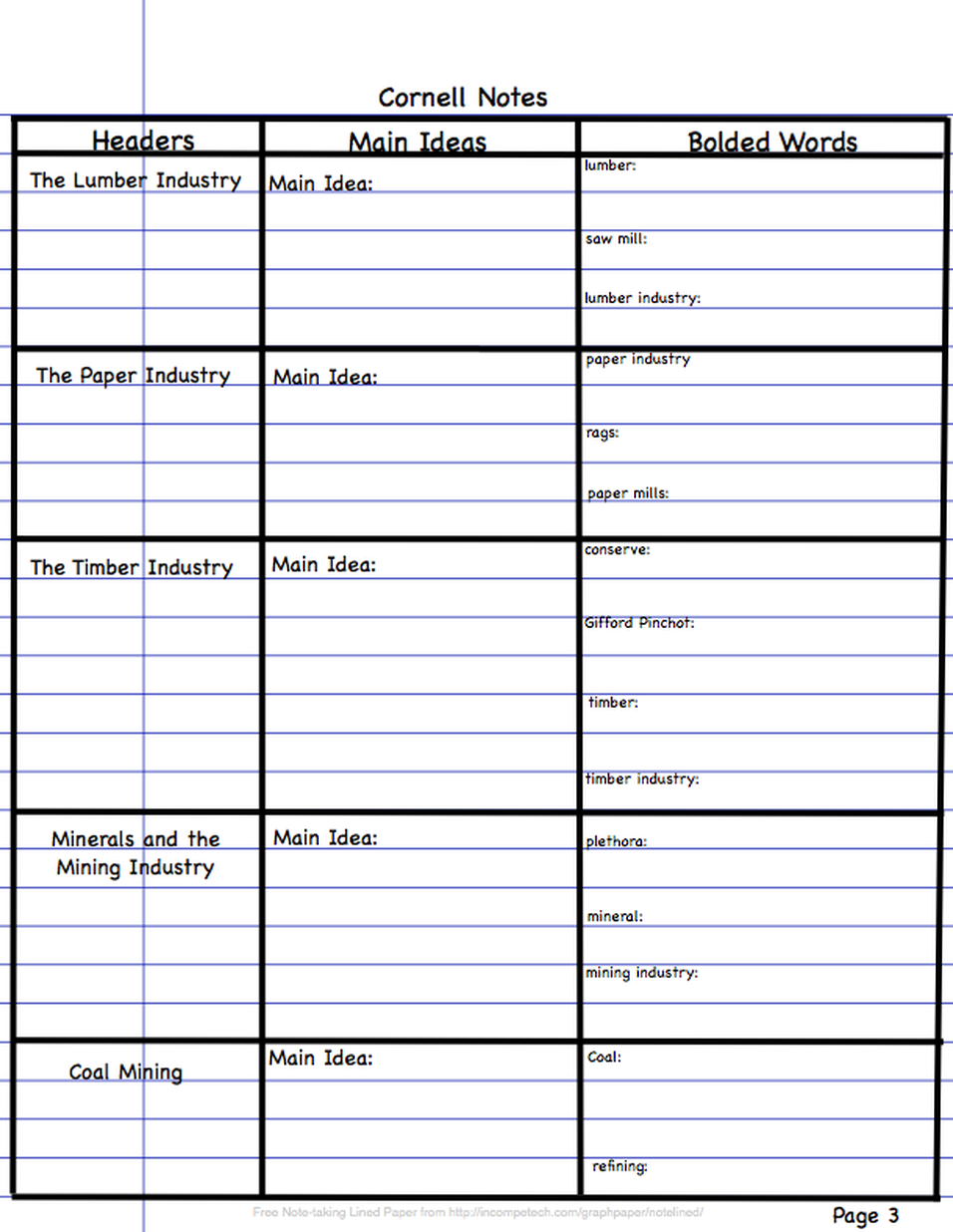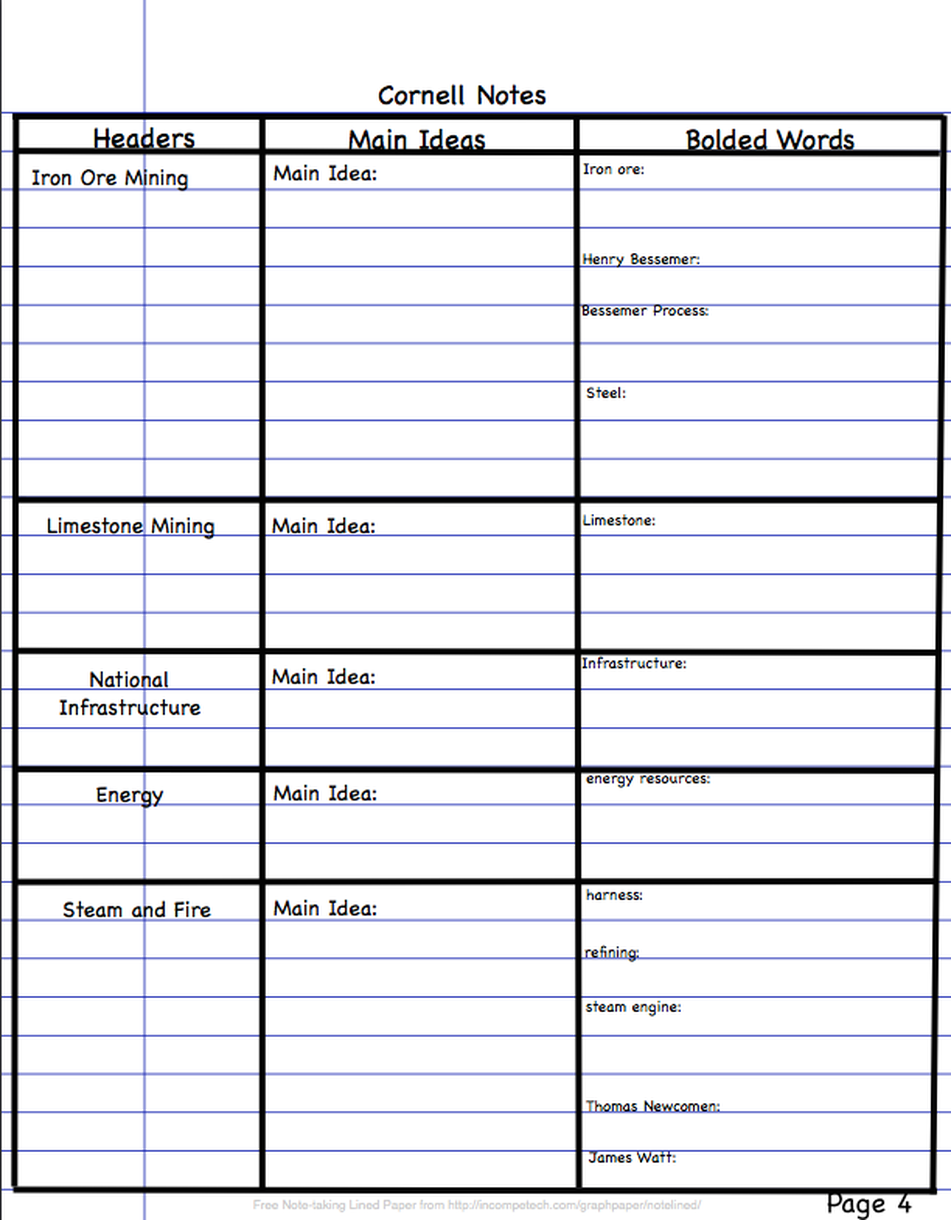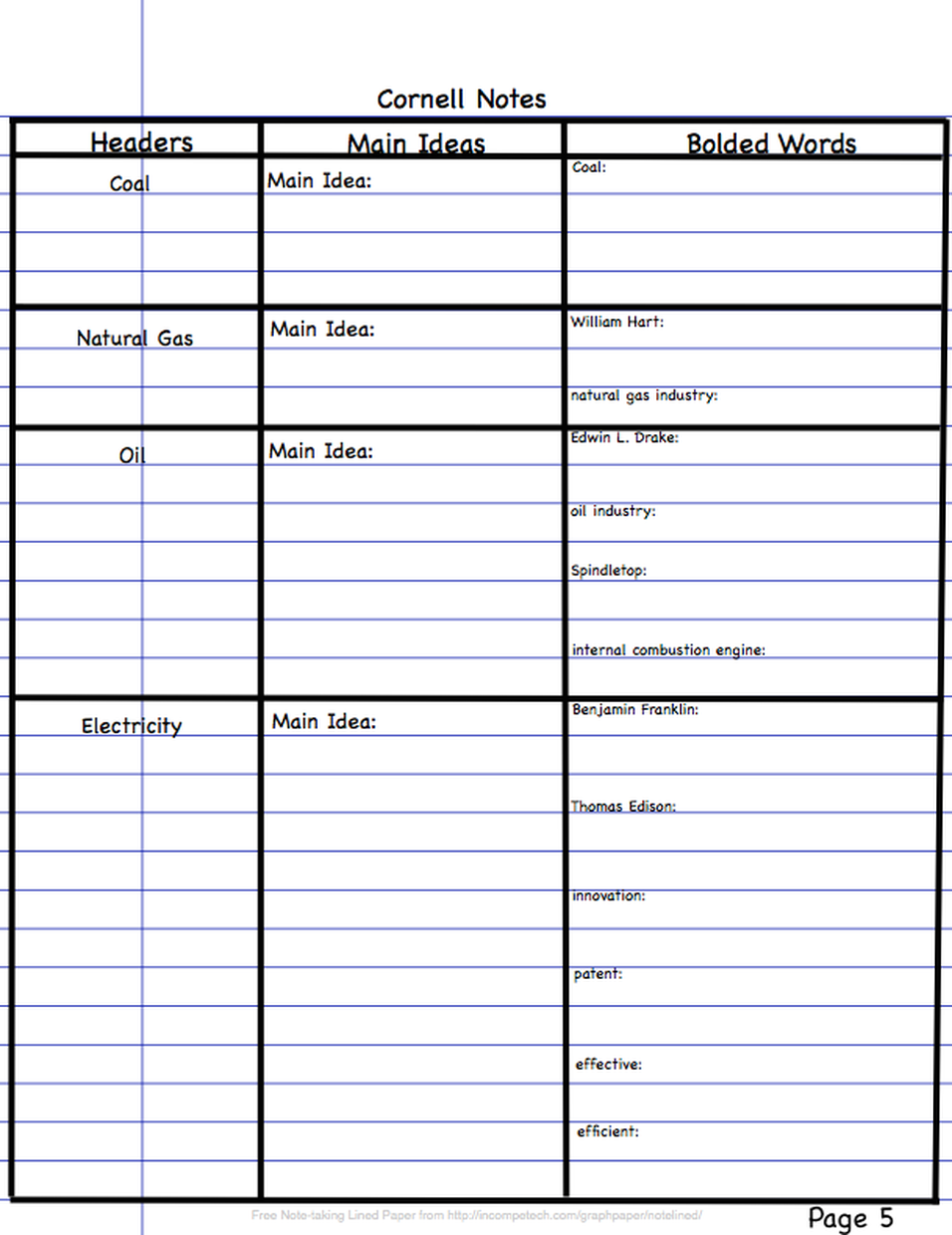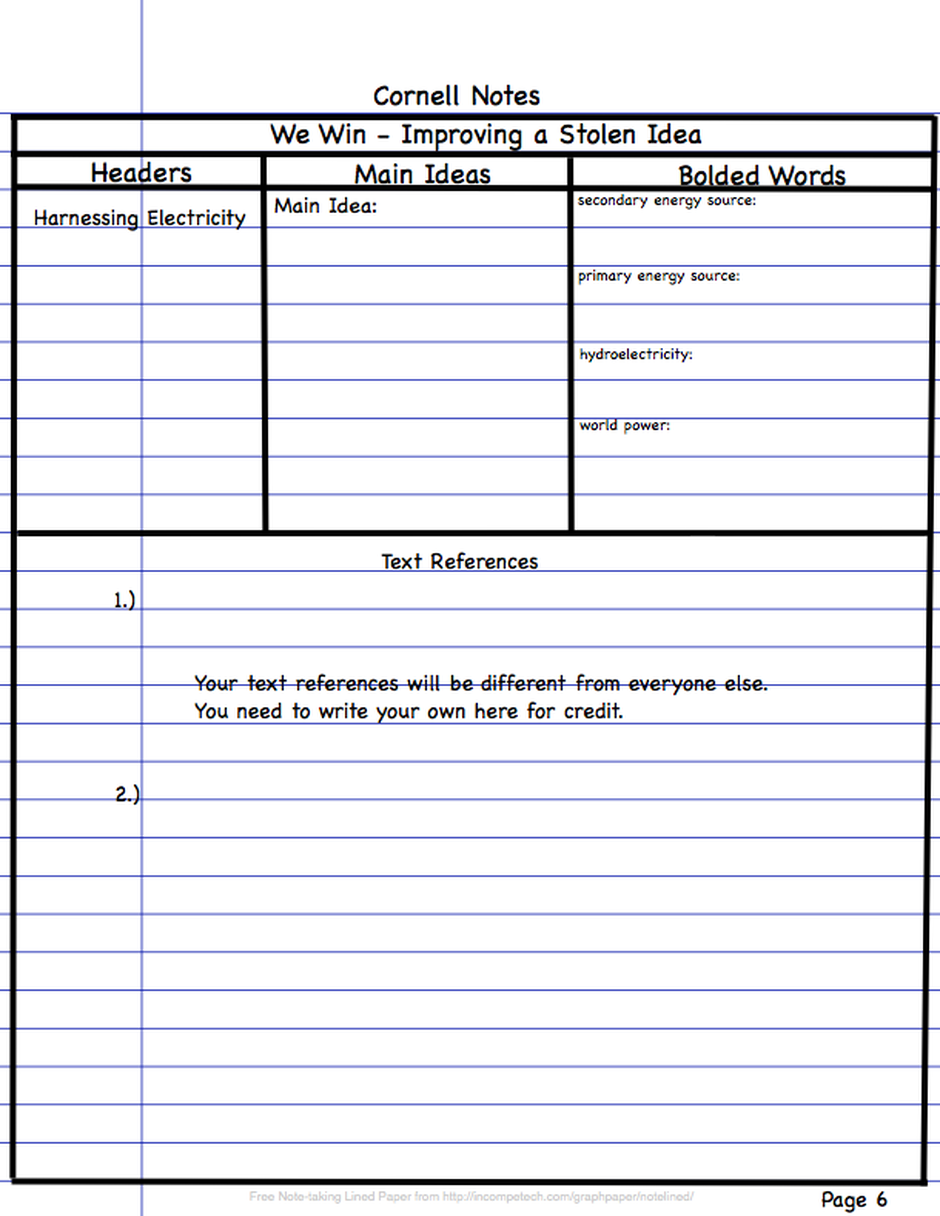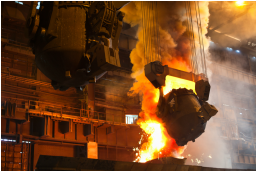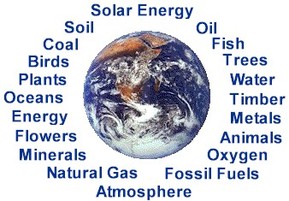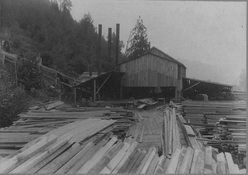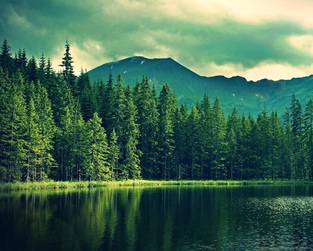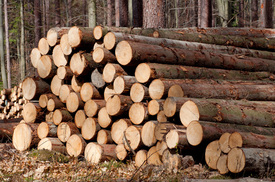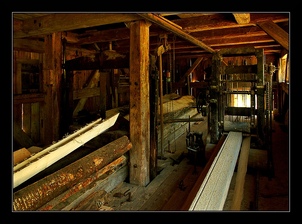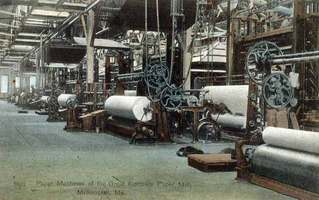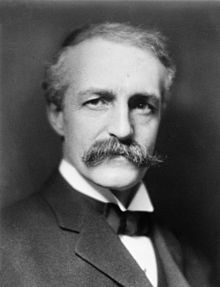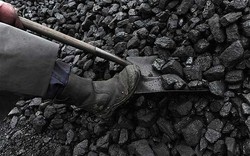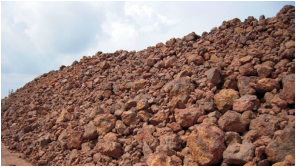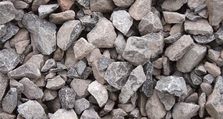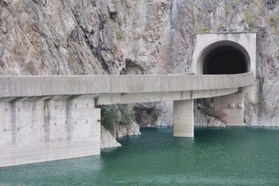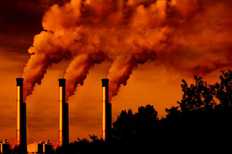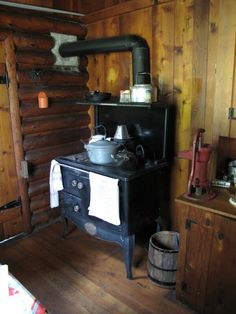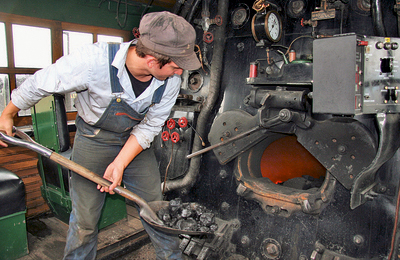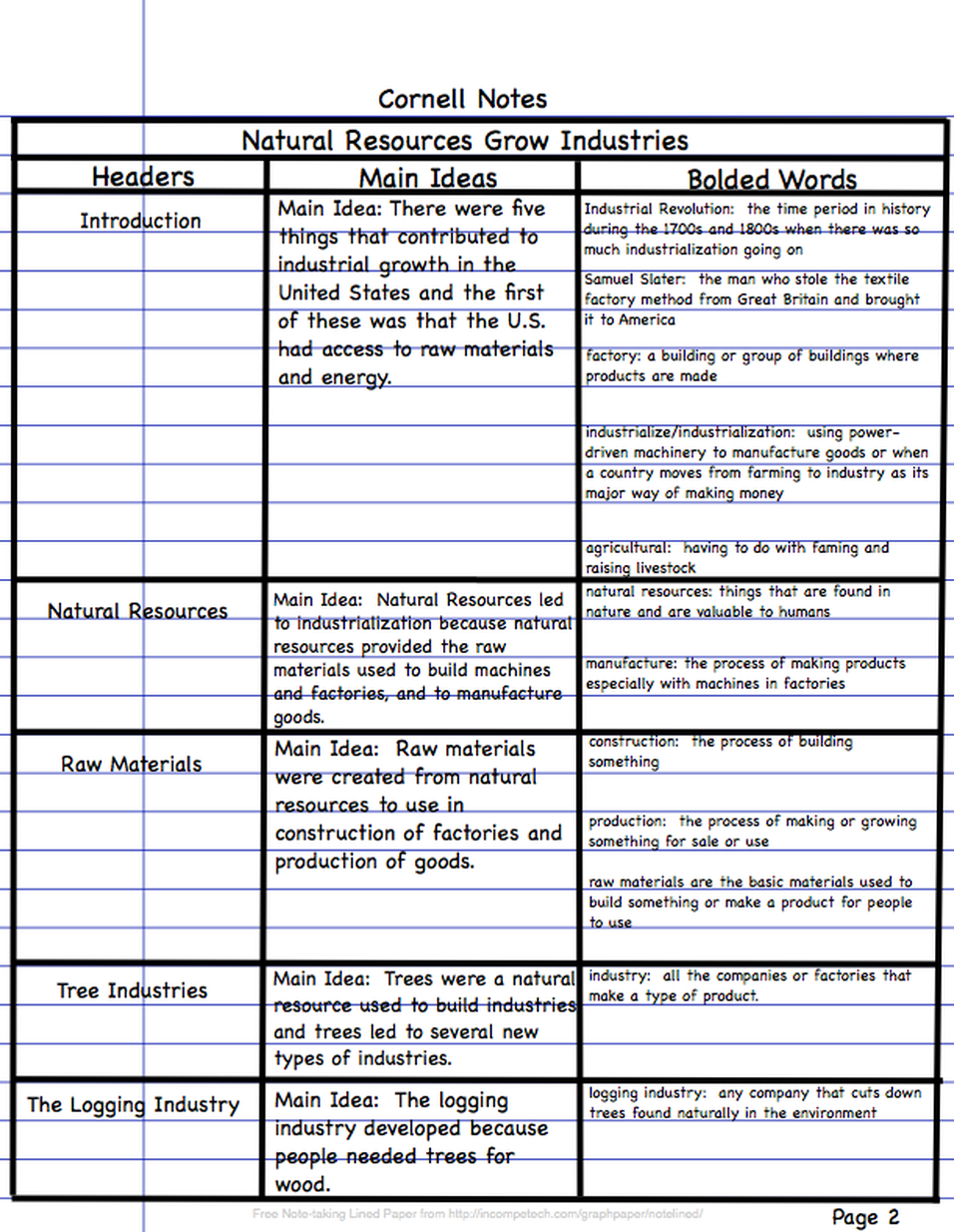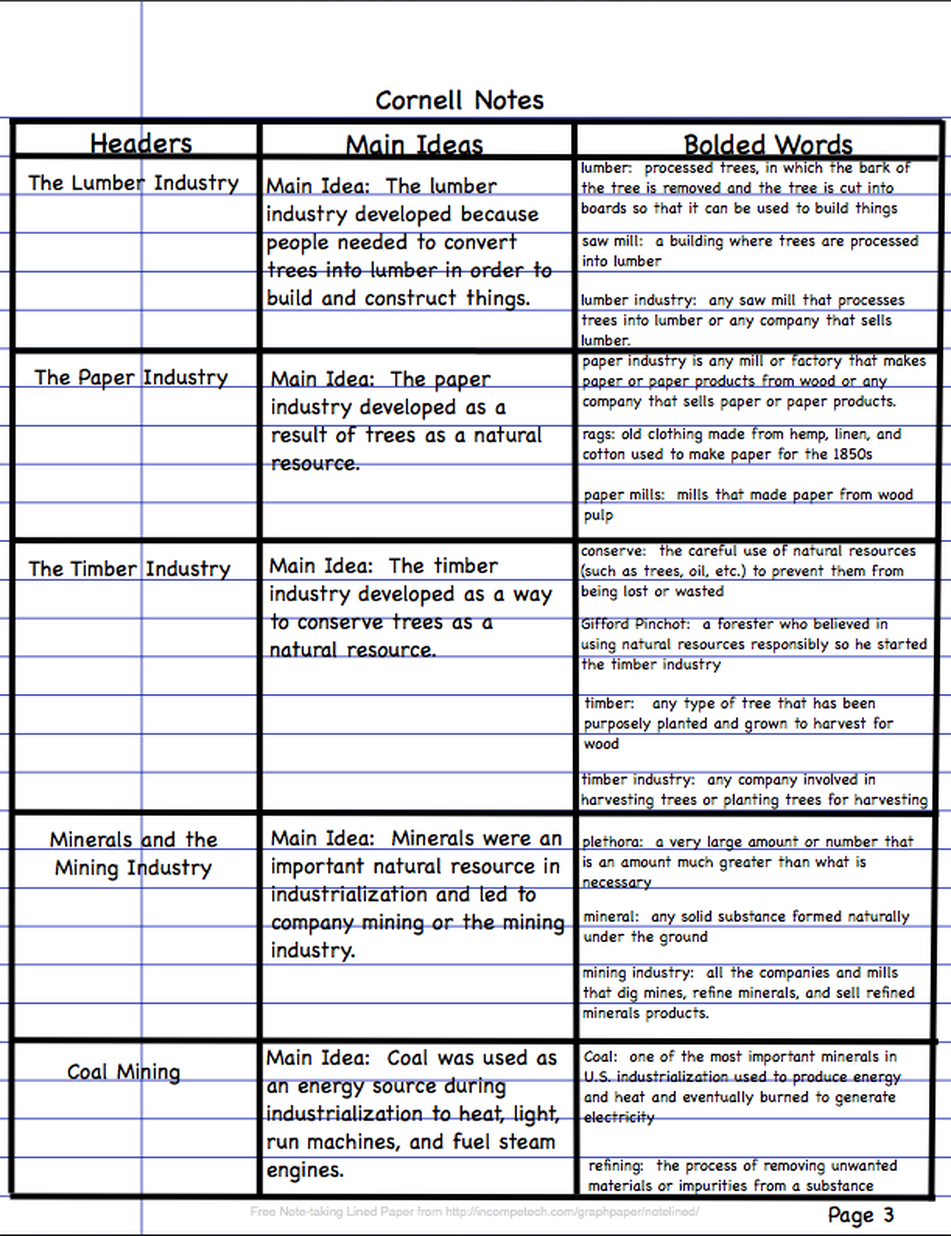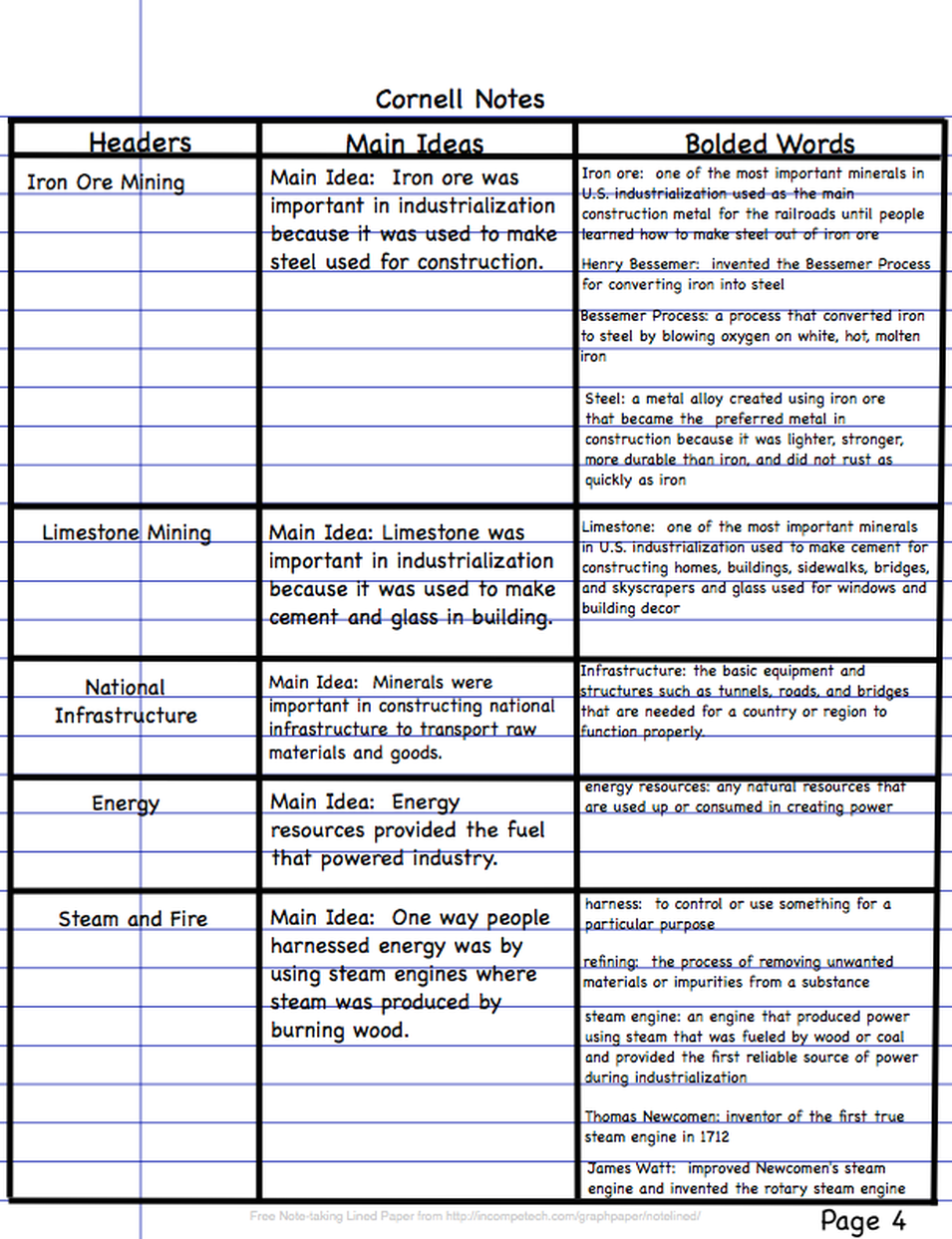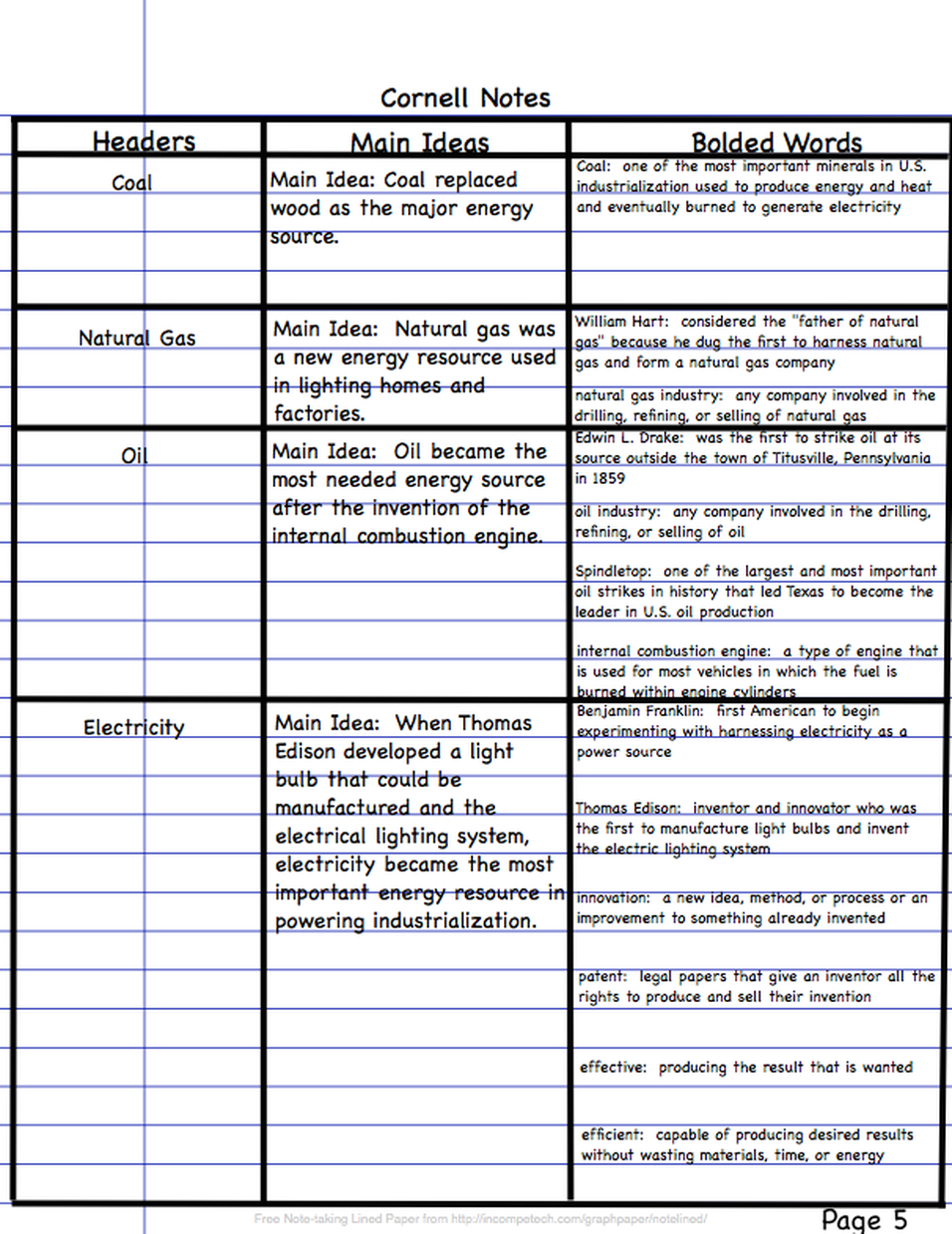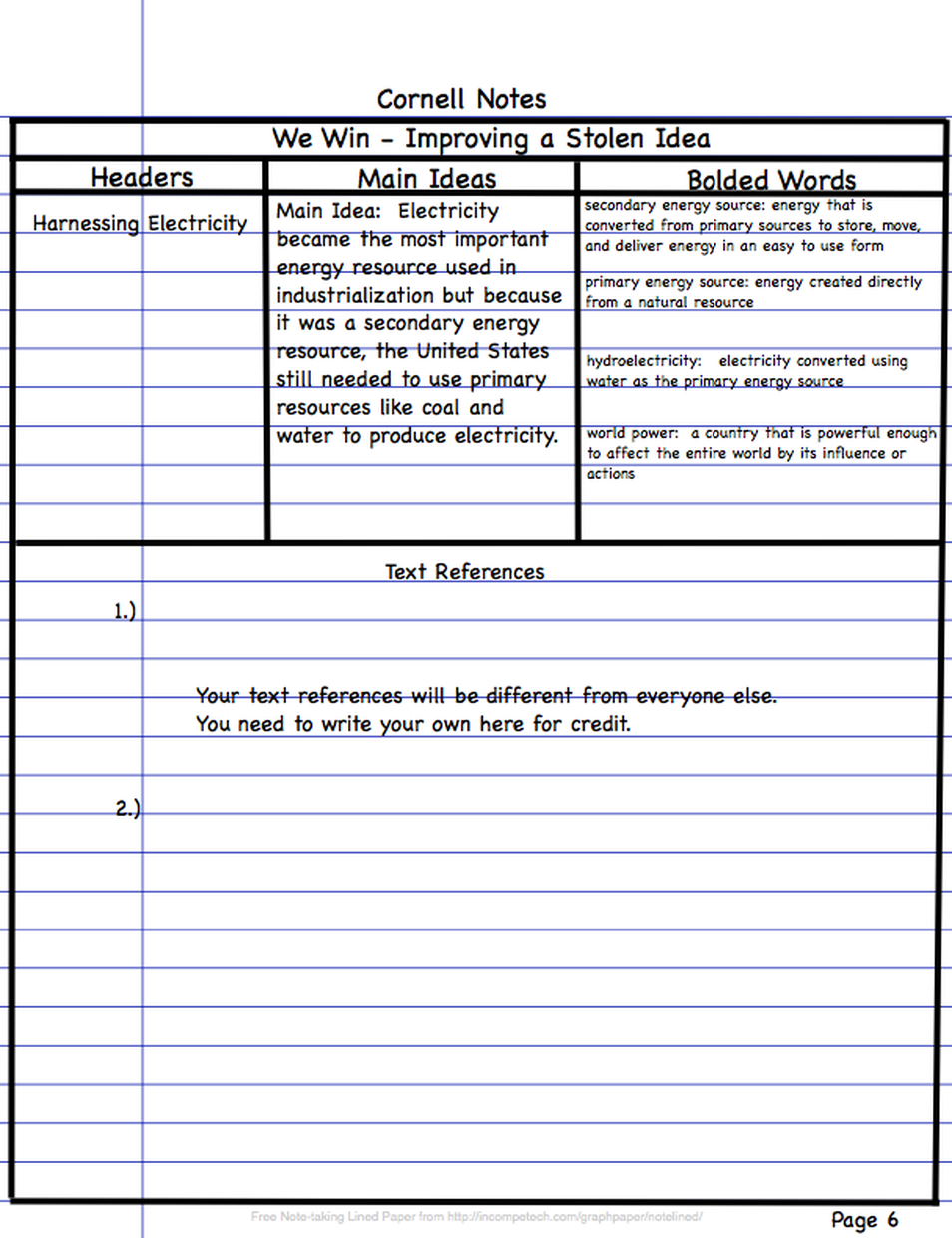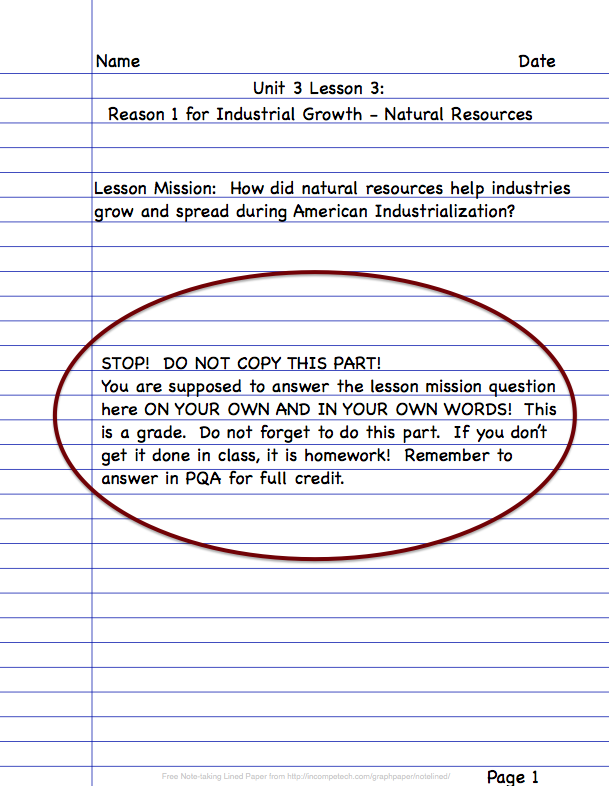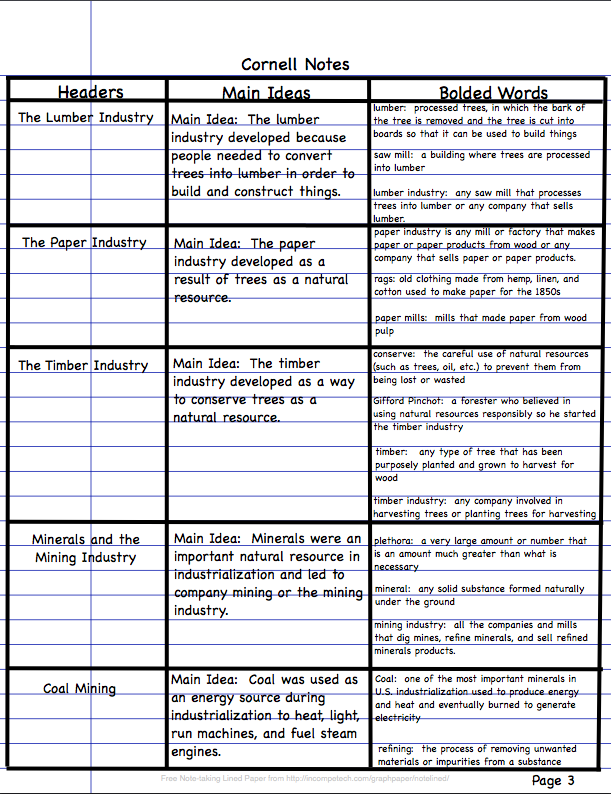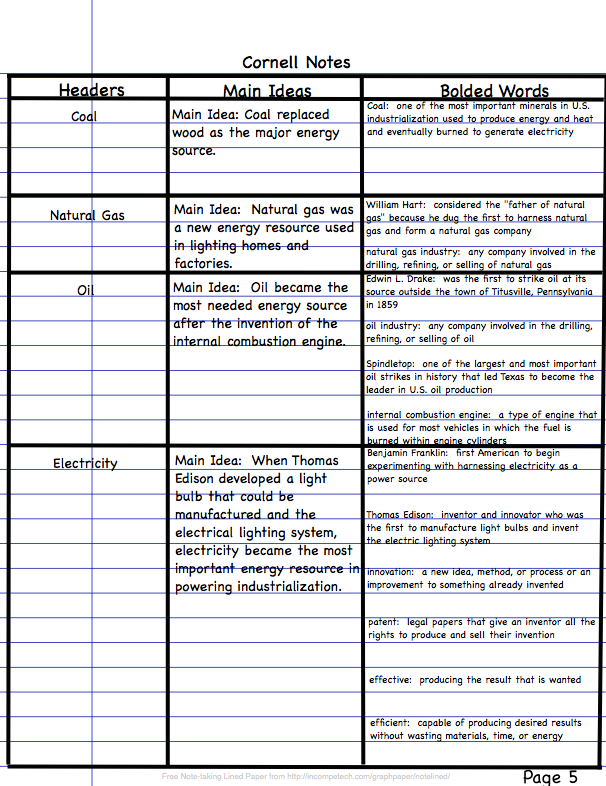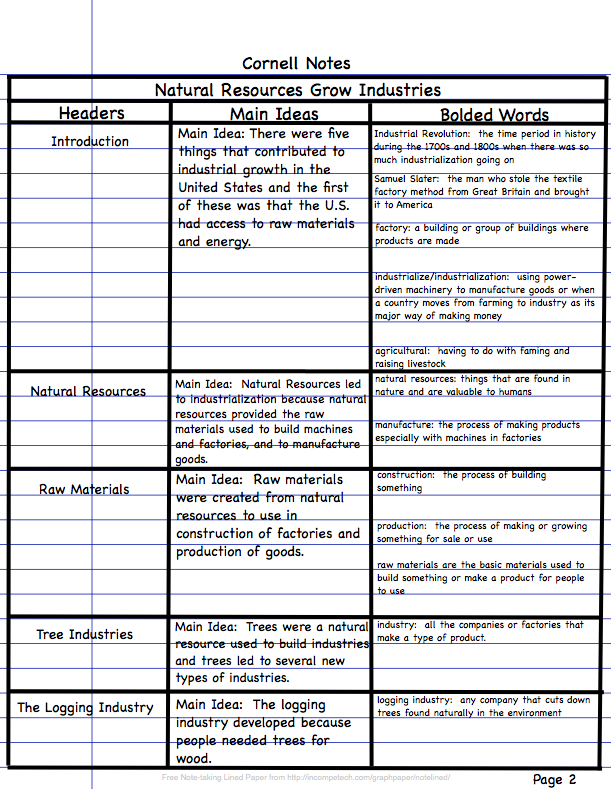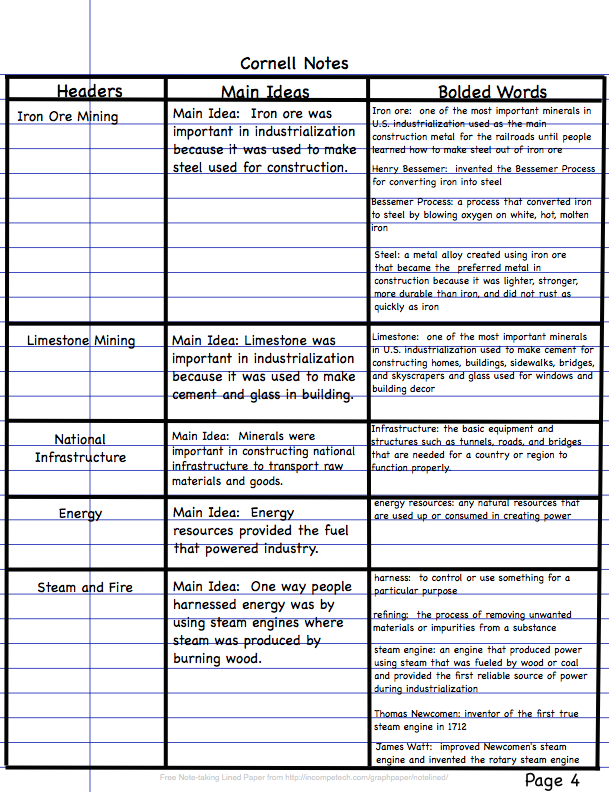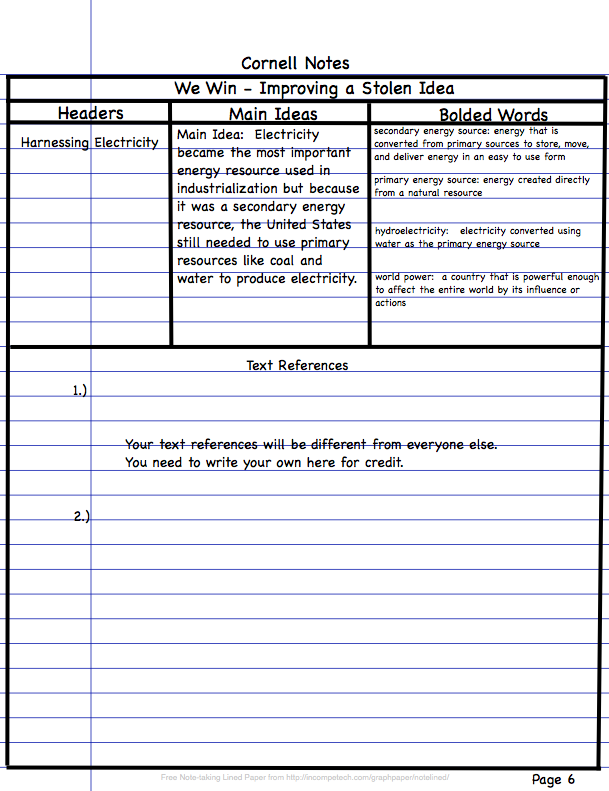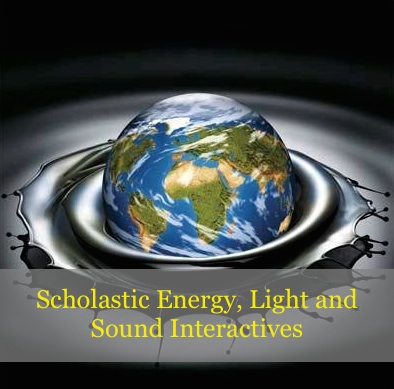Unit 3: The Industrialization Age
Topic 1: Industrialization
Topic 1: Industrialization
LESSON 3
~ REASON 1 FOR INDUSTRIAL GROWTH ~
NATURAL RESOURCES
FOCUS ACTIVITY
Lesson Mission

DIRECTIONS: Remember, the Lesson Mission is what you, the student, will be able to do after the lesson is over. Begin today's Lesson Chronicles Entry by heading your paper with your name and the date and the Lesson Title. Write down today's essential question. Answering the essential question at the end of the lesson is your Lesson Mission!
Essential Question(s):
How did natural resources help industries grow and spread during American Industrialization?
How did natural resources help industries grow and spread during American Industrialization?
Set up your Lesson Chronicles for today like the example below.
TEACHER ACTIVITY
Pre - Reading - Making a Skeleton Outline

DIRECTIONS: Remember, accomplishing your lesson mission is your purpose for reading. To accomplish your mission, you must be able to answer the essential question(s). We will continue to work on answering essential questions by identifying information from key text structures to make a skeleton outline of the text.
|
Recall the Key Text Structures in Non-Fiction Text:
1. Headers 2. Sub-headers 3. Bolded Words 4. Italicized Words 5. Pictures & Captions 6. Boxed off Information 7. Charts and Graphs 8. Maps |
Create a Skeleton Outline:
1. Column 1: Headers and Sub-headers 2. Column 2: Main Idea 3. Column 3: Bolded words with definitions and descriptions 4. Bottom Row: Text References - These are your own personal thoughts about the reading! |
Set up the Skeleton Outline for today like the example below.
WHOLE GROUP ACTIVITY
Guided Reading

DIRECTIONS: Now that you have a purpose for reading, and you have identified the key elements of the reading, we will take turns reading the passage below as a class.
As you read, if a certain part of the reading makes you think of a text to text, text to self, or text to world connection, write it in the bottom row.
Recall the text to text, text to self, and text to world strategy:
As you read, if a certain part of the reading makes you think of a text to text, text to self, or text to world connection, write it in the bottom row.
Recall the text to text, text to self, and text to world strategy:
- Text to text references: When a certain word, phrase, or sentence reminds you of something else that you have read.
- Text to self references: When a certain word, phrase, or sentence reminds you of something about your own life.
- Text to world references: When a certain word, phrase, or sentence reminds you of a world issue or event.
~ NATURAL RESOURCES GROW INDUSTRIES ~
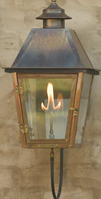 A light powered by natural gas
A light powered by natural gas
Natural gas was another one of America's natural energy resources. Like wood and coal is burned to produce energy for heat, light, cooking, and running machinery. In 1821, William Hart dug the first natural gas well outside the town of Fredonia, New York. Hart then formed the nation's first natural gas company, Fredonia Gas Light Company, in 1858. William Hart is considered the "father of natural gas" in the United States. When Hart's gas light company led many other places to dig natural gas wells and build pipelines, the natural gas industry was born. Soon, many factories began using natural gas to power their machines and light their factories so that factory work could continue even after dark.
Oil
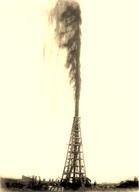 Spindletop
Spindletop
On August, 27, 1859, Edwin L. Drake was drilling a well and struck oil outside the town of Titusville, Pennsylvania. It was the first time oil was found at its source. It was not long before oil wells popped up all over Pennsylvania. In 1901, Texas became the leader in the American oil industry when one of the largest and most important oil strikes in history occurred on a mound called Spindletop. Oil was only used for lighting kerosene lamps at first, but the invention of the internal combustion engine in automobiles and airplanes increased the need for oil. Though oil was not an important energy resource until the internal combustion engine, it became one of the most needed energy resources after it.
Electricity
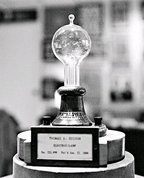 Thomas Edison's electric lamp
Thomas Edison's electric lamp
In the mid 1700s, Benjamin Franklin performed many experiments with electricity. Many men worked to turn electricity into a power source. These men paved the way for Thomas Edison, an inventor and innovator who would change the lives of Americans and the world forever. Thomas Edison did invent many things but a good many of his successes were actually innovations. One of these innovations was the electric light. Many people give credit to Thomas Edison for inventing the electric light, but in reality, he simply innovated it. He made it better by making changes to it.
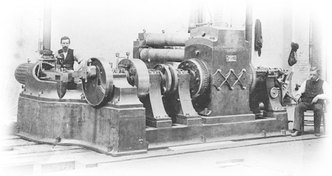 One of Edison's electric power stations
One of Edison's electric power stations
Edison was also able to make his light bulb inexpensively by manufacturing it. It was the fact that Edison was able to make large amounts of light bulbs, quickly, and inexpensively that was the true innovation because it led to Edison's greatest accomplishment, electric lighting system! Edison was able to create electric lighting for whole towns by using light bulbs, electricity generators, wires to get the electricity from the power station to the homes, plugs for lamps, wall sockets, switches for the light bulbs, and many other things. Edison’s first electric lighting infrastructure was the Pearl Street Station in New York City’s financial district. It sent electricity to lights in 25 buildings on September 4, 1882.
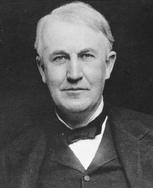 Thomas Edison
Thomas Edison
During his life he patented 1,093 inventions. Edison created the first research and development lab in the world in Menlo Park, New Jersey. He called this lab the "invention factory." His inventions earned him the nickname "The Wizard of Menlo Park." His inventions, many powered by electricity, improved industries and allowed for more effective and efficient production. Electricity not only became the most important energy resource in powering industrialization, it also changed everyday life for people all over the world.
Harnessing Electricity
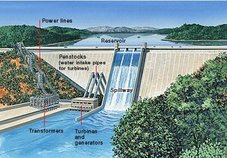 A diagram showing how hydroelectricity is produced
A diagram showing how hydroelectricity is produced
Electricity is a secondary source of energy. A secondary energy source is energy that is converted from primary sources. They are used to store, move, and deliver energy in an easy to use form. So, electricity is produced by converting a primary energy source. A primary energy source is energy created directly from the actual resource. Coal was the primary energy resource used to produce electricity but wood, oil, and natural gas were also used. After the Civil War, hydroelectricity was introduced for the first time. Hydroelectricity is electricity converted using water as the primary energy source. Solar power, wind power, and nuclear power all developed in the twentieth century. Natural resources and the knowledge to convert resources to energy helped the United States to fly through industrialization and gain status as a world power.
SMALL GROUP ACTIVITY
Industrialization Jeopardy!
In this activity, your group will play Industrialization Jeopardy. Each small group will be a team playing against other small groups to win the game. It is played almost like the real Jeopardy. We will draw numbers to see which team opens the board. The number 1 player from each team will come to the buzzer. I will ask the question under the category and points amount that the selecting team chooses. The first team to press the buzzer will have 15 seconds to answer the question. If the team is correct, they gain the number of points that the question is worth and will choose the next category. If they are incorrect, they lose the points and another team may answer. If no team answers correctly, the team that answered the last question correctly will make the next game board choice. You will go through 2 game boards and final jeopardy. In final Jeopardy, I give you a category of what the question will be about. The teams all wager points on how well they believe they will answer the question. After the wager, I ask the question and each team has 30 seconds to answer the final question and turn it in. When all answers are in, I will read the answer and add and subtract points from each team according to their wager. The team with the highest points at the end of the game is the winner. I will move your trophies above each winning teams table.
Any questions?
Any questions?
INDIVIDUAL ACTIVITY
Answering the Essential Question

A Lesson Chronicles Activity is an individual activity where you prove that you accomplished the lesson mission. Lesson Chronicles require you to keep a notebook or journal with a table of contents. Each entry should be dated. First, you write the lesson mission. Then you prove you "can do" whatever the mission says by answering the essential question of the lesson in PQA format. Remember PQA format means "Put the Question in the Answer".
DIRECTIONS: Work by yourself to prove you have completed today's mission successfully by answering the essential question for today. Answer the question on the first page of your Lesson Chronicles under your Lesson Mission. Refer to the example below. The example shows you what all you are expected to have for your portfolio check on this lesson.
HOMEWORK
Finish the Lesson and Family Time

Remember, you have homework every night in Social Studies. Your homework is to show your Lesson Chronicles to your family and tell them what you learned today. Not only will this give you quality time with your family but it will help you review for your unit test. Go over your lesson chronicles entry from today everyday to help you study for the Topic Quiz and Unit Test.
If you did not complete any assignments from today, they are homework. You never know when I am going to check portfolios, so make sure you are keeping up!
If you did not complete any assignments from today, they are homework. You never know when I am going to check portfolios, so make sure you are keeping up!
END OF THE UNIT 3 LESSON 3 MODULE

Congratulations! You have Completed the Unit 3 Lesson 3 Module!
If you'd like to learn more about natural resources and energy and how they impacted U.S. Industrialization, click on the icon below Scholastic Energy, Light and Sound Interactives. You may do any of the inter actives on the page, but you must use your headphones. You may do these at home as well!
If you'd like to learn more about natural resources and energy and how they impacted U.S. Industrialization, click on the icon below Scholastic Energy, Light and Sound Interactives. You may do any of the inter actives on the page, but you must use your headphones. You may do these at home as well!
